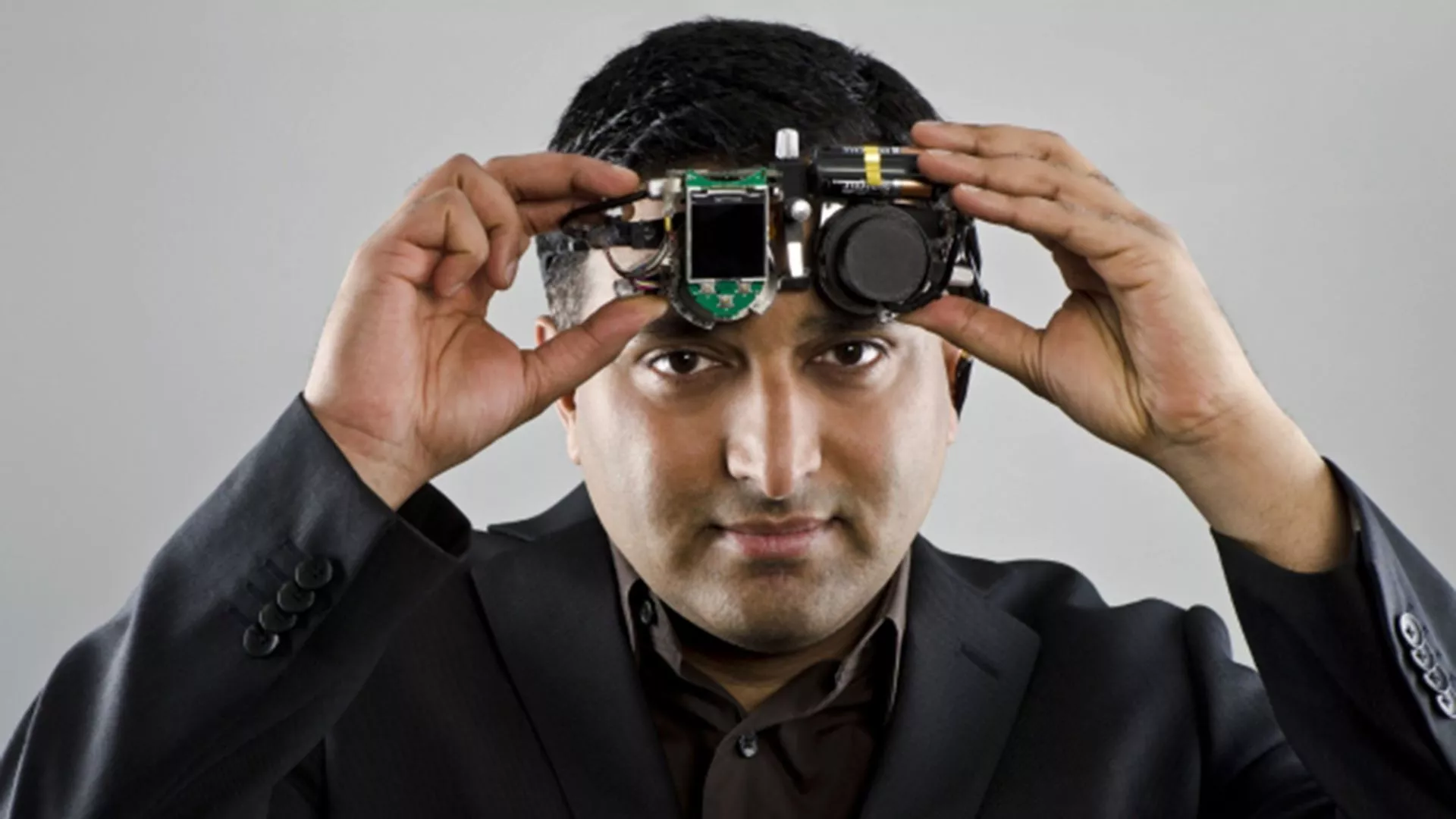Inventor and MIT Media Lab professor Ramesh Raskar talks about how his high-tech inventions and initiatives can help solve real-world problems.
November 2018

Ramesh Raskar has co-invented femto-photography, an ultra-fast imaging technology that can see around corners or beyond the line of sight. (Photograph by Len Rubenstein)
Ramesh Raskar is an associate professor at the Massachusetts Institute of Technology Media Lab and directs its Camera Culture research group. He has dedicated his career to creating many impactful high-tech inventions and holds over 80 patents. As a researcher, inventor, mentor and changemaker, Raskar combines the best of the academic and entrepreneurial worlds to help improve the lives of people. He is the co-inventor of femto-photography, an imaging technology, which could help build cameras that can look around corners or see inside a human body without X-rays. Raskar has received several awards, including the 2016 Lemelson-MIT Prize, which honors outstanding mid-career inventors dedicated to improving the world through technological inventions.
Excerpts from an interview.
Please tell us about your background and what inspired you to create inventions to help others.
I am the youngest of four children and had a lot of support from my father and older siblings. Because I scored so high in my exams from an early age, I found myself on a certain path based on my academic abilities. My father served in the Indian Army and came from an extremely modest background. After he took an early retirement from military service, he dedicated himself to the education of his children and to helping others. For me, he set a prime example of what it means to work hard and to help others.
What skills or qualities are most crucial for success in your field?
Ten or 15 years ago, I probably would have said it was all about being clever. But now, I realize that cleverness alone is not enough. The challenges we are facing in our world today are incredibly complex. So, at some level, an inventor’s job requires thinking in an anti-disciplinary manner—not multidisciplinary or across fields, but in a way that looks beyond disciplines.

American filmmaker and producer J.J. Abrams (left) and Ramesh Raskar at MIT Media Lab. (Joi/Courtesy Wikipedia)
Could you briefly explain how femto-photography works?
The simplest analogy is probably sound. Most people can conceptualize how sound waves travel—they move relatively slowly—and it’s not difficult to understand how they disperse and flow around a room, or even around a corner. Light is similar, except it travels so much faster that we cannot process or sense the echoes of light in the same way we do sound. But, just as sound moves around corners, with femto-photography, we are able to use echoes of light to see around corners or through things. The technology is so fast that you can create slow-motion videos of light in motion. And with that, we can create cameras that can look around corners or beyond the line of sight.
Could you please share a few examples of the real-world problems that femto-photography can help solve?
The implications and applications of femto-photography are almost limitless. If you start by thinking about it in relation to things that we already understand, you can imagine how it could, for instance, help a self-driving car see around the bend to know what’s coming ahead. Or, how it could help with looking for survivors in hazardous conditions after a natural disaster.
What other projects are you working on right now, which have the potential to positively impact the lives of others?
My passion is to inspire a new generation of young people to solve problems at the right time. I want my work to play some small role in helping young people come up with solutions that we can’t even imagine yet.
REDX is a project we launched that stands for Rethinking Design Engineering Execution. It brings together technical experts, innovators, research institutions, implementation partners and corporate partners to solve the most pressing challenges in our communities. The philosophy behind it is that in order to solve real problems in the world, we have to help young people learn the framework for problem-solving. It runs online and off—sort of like a club that meets once a week. We have such clubs now in almost every continent.
I’m also excited about our work on Kumbhathon, a year-round initiative in my native town of Nashik, Maharashtra. Kumbhathon uses the REDX problem-solving model to bring together smart citizens to collaborate on developing solutions to world challenges in real-time with technology.
Jason Chiang is a freelance writer based in Silver Lake, Los Angeles.
COMMENTS